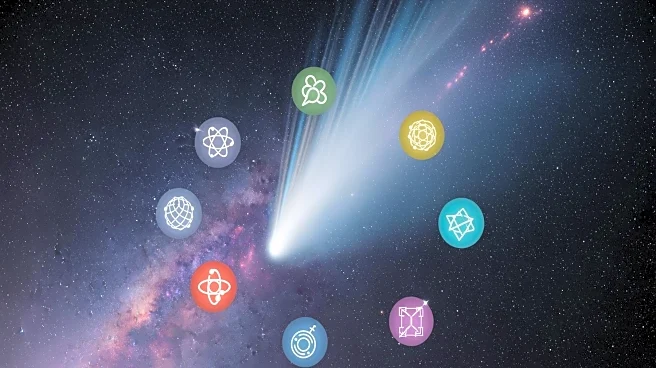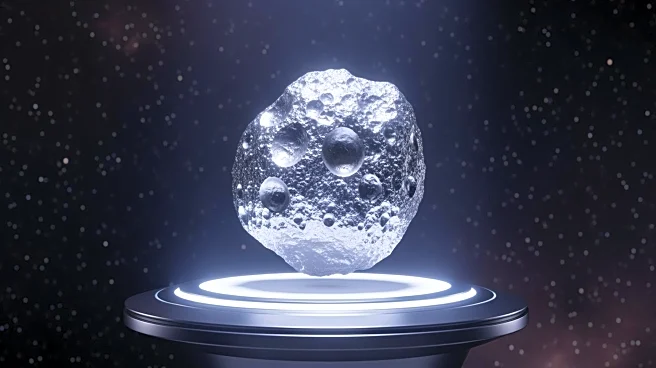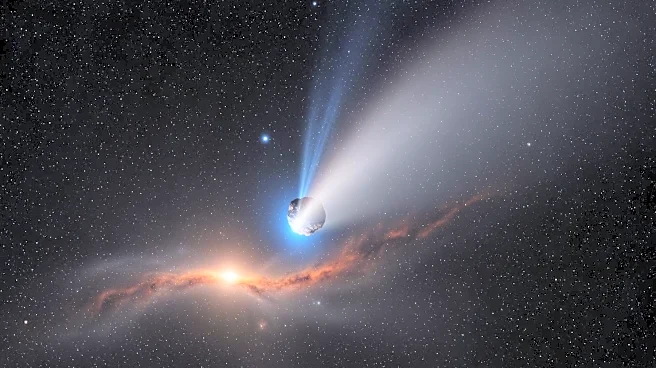What's Happening?
Researchers from NASA's Jet Propulsion Laboratory and Chalmers University of Technology have discovered that on Saturn's moon Titan, molecules are defying a fundamental rule of chemistry. The study, published in the journal PNAS, reveals that polar molecules like
hydrogen cyanide can form stable co-crystals with nonpolar hydrocarbons such as methane and ethane on Titan's surface. This finding challenges the 'like dissolves like' principle, which states that polar and nonpolar substances typically do not mix. The research involved replicating Titan's frigid conditions and analyzing the interactions of these molecules, leading to the discovery of unexpected co-crystal formations.
Why It's Important?
This discovery has significant implications for our understanding of chemical processes in extreme environments, potentially altering the way scientists view chemical interactions beyond Earth. The ability of polar and nonpolar molecules to mix on Titan could lead to the formation of exotic solid structures, offering insights into the moon's surface chemistry and atmospheric processes. This research could also inform future missions, such as NASA's Dragonfly probe, which aims to explore Titan's surface in 2034. The findings may provide clues about the potential for life or prebiotic chemistry on Titan, as the moon's conditions are thought to resemble those of early Earth.
What's Next?
Future research will likely focus on further exploring the chemical interactions on Titan and their implications for the moon's geology and potential habitability. The upcoming Dragonfly mission will provide additional data to complement these findings, allowing scientists to test their theories about Titan's surface chemistry. Researchers may also investigate similar chemical processes on other celestial bodies, broadening our understanding of chemistry in the solar system.
Beyond the Headlines
The study highlights the importance of interdisciplinary collaboration in advancing scientific knowledge. By combining theoretical modeling with experimental data, the researchers were able to uncover new insights into Titan's chemistry. This approach could be applied to other scientific inquiries, demonstrating the value of integrating different scientific disciplines to solve complex problems.














